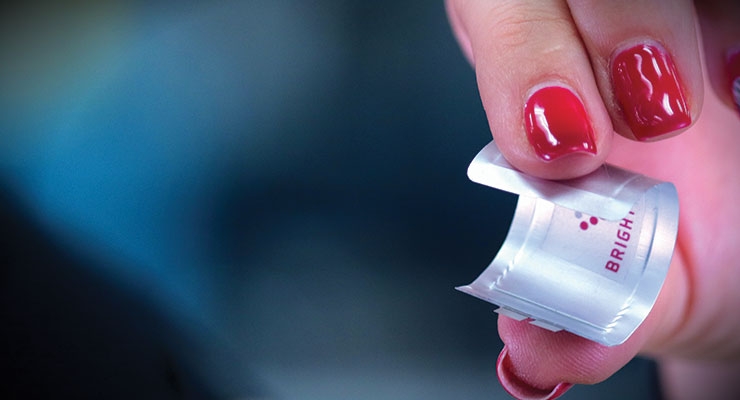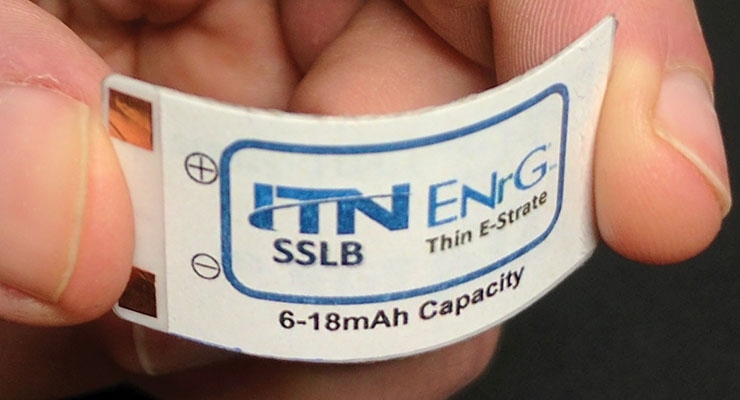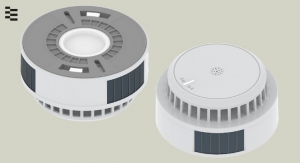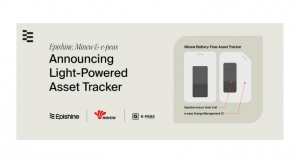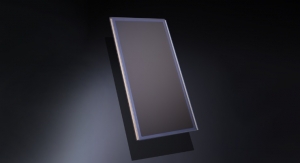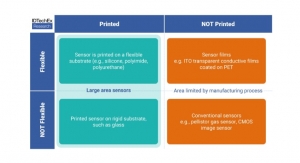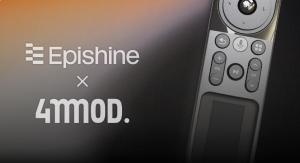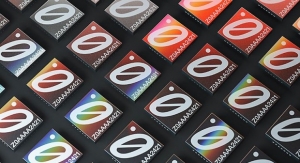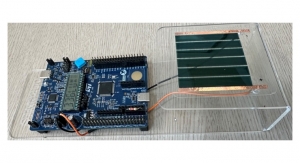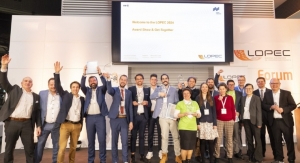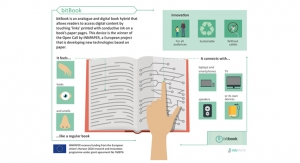David Savastano, Editor03.23.17
As the Internet of Things (IoT) emerges, the need to power these potentially billions of sensors becomes even more critical.
It is a lucrative market. Global Market Insights, a consultancy, reports that the market for thin film batteries was $200 million in 2015, growing at a CAGR of 25% from 2016-24 to more than $1.5 billion in 2024.
The opportunities for flexible batteries are clear. Current solutions are limited by a variety of factors. For example, coin cell batteries are not flexible and also are not disposable. While it is theoretically possible to create solar-powered cells, that chemistry is not there yet for the IoT. This potential has opened the market for a number of interesting companies.
Anja Talo, director, marketing and sales for Enfucell Oy, said that Enfucell has seen an increase in the interest in printed batteries and battery-assisted devices in recent years.
“It is boosted by the rise of the IoT and, on the other hand, by the development of ultra-low power electrical components,” Talo noted. “The Internet of Things in key segments is not possible without thin and flexible batteries to power up devices and solutions. Printed batteries solve problems that are in many cases unsolvable using traditional battery technology.”
A licensee of the Oak Ridge National Laboratory, ITN Energy Systems has been developing next generation thin film batteries for nearly 20 years. Dr. Brian Berland, chief science officer at ITN Energy Systems, Inc., said that interest in less powerful batteries is driving growth in the market.
“Initially, when thin film batteries were first introduced, the market either wanted very high capacity for traditional products like cell phones, laptops, automobiles, etc. or very low cost products with limited markets like RFID tags,” Dr. Berland said. “Over the last two to three years, the market has evolved and ITN is seeing a growing demand for batteries requiring 1-100 mAh capacity cells.
Further, there is greater interest in not only very high volumetric energy density, but for the energy to be stored in very thin, flexible profiles.”
Dr. Berland reported that ITN has received inquiries/interest from a large cross-section of industries, including medical devices/implants, flexible electronics/displays, smart wearables, smart cities (sensor power), IoT, wireless devices and defense.
Key Markets for Thin Film Batteries
BrightVolt specializes in solid state, ultra-thin lithium polymer batteries, and has sold more than 15 million flexible batteries for applications in the market. BrightVolt’s batteries are flexible, and at less than 0.45 mm thick, they are less than half the width of a dime. The technology is also disposable, and not harmful to the environment.
Initially formed as Solicore in 2001, BrightVolt was rebranded in 2015. RR Donnelley took an equity position in Solicore in 2011, and maintains its equity position and a seat on BrightVolt’s board.
Venetia Espinoza, VP marketing and product, said that BrightVolt is focused on five key markets: medical devices, smart labels, smart cards, wearables and interactive marketing. The company customizes its batteries to meet specific needs.
Espinoza mentioned a few examples of where BrightVolt’s flexible battery technology is already playing a critical role.
“In the medical market, one interesting example is a pain management patch worn directly on the skin,” she said. “A wave form is transmitted into the muscles and helps to reduce pain. The patch that uses BrightVolt batteries does something similar, but the patient doesn’t have to go to a doctor’s office. Another medical patch monitors electrolytes through sweat, and generates a sports drink that directly matched the needs of that specific athlete. We also work with companies that provide heart rate and glucose monitoring patches that help consumers better manage their health.”
For sensors and labels, BrightVolt is supplying batteries for sensors on packaging for fruits, vegetables and meats that can be time and temperature sensitive, as well as medicines.
“There are medicines and shots that have to be refrigerated through the supply chain to remain active,” Espinoza said. “General tracking labels need to have power for reading and storing the data during the duration of tracking.”
Espinoza said that in the powered card space, there are financial cards that require authentication, or in the case of credit cards, a press of a button can create dynamic generation of the authentication code. Interactive marketing includes shelf talkers that show price changes as well as general marketing to attract more attention to products. The wearable segment is another area of interest.
“For wearables, we are in early stages of discussions where the key objective is form factor, very thin, light and flexible,” Espinoza added. “Most interest in the wearables space is in rechargeables.”
Technologies for Flexible and Printed Batteries
There is a wide range of technologies being used for flexible batteries. Anaba Anani, BrightVolt’s chief battery scientist, noted that BrightVolt batteries use a patented polymer-electrolyte and manufacturing processes.
“What sets us apart is how we make our battery,” Anani said. “It is solid state with polymeric solids, but also flexible. We simply take components that form the electrolytes in a traditional battery, and form a polymeric state in a very thin profile.” Anani added that BrightVolt is working on rechargeable batteries.
Talo noted that wearable devices and sensors need their own power source in a form that does not hinder the usability or performance of the device or action. “Printed batteries fulfill this requirement,” Talo added. “Their size and shape can be tailored according to application, and no metal casing is needed. Moreover, printed batteries can be fully integrated in the devices they are powering.”
Dr. Berland said that limitations of traditional lithium ion batteries are driving interest in printed and flexible batteries. In conjunction with ENrG, ITN is developing thin film, solid state batteries on flexible ceramic substrates.
“Much of the market interest is driven by the limitations of traditional lithium ion batteries to maintain their energy density when scaled to smaller volumes or ability to meet unique form factors for batteries built onto or into products (think of a button cell residing on top of a flexible circuit and destroying the form factor/advantages, embedding the battery inside a smart card, trying to fit batteries in small spaces in the body for medical implants),” Dr. Berland observed.
Anani sees printing the batteries as an opportunity to gain additional benefits.
“We see a huge overlap between flexible and printed batteries,” Anani observed. “Most flexible batteries can be printed, but not all printed batteries are necessarily flexible. In our manufacturing process, we are strongly looking into printing, as printing gives us several advantages.”
Outlook for Printed and Flexible Batteries
Manufacturers of flexible and printed batteries say that they are seeing excellent opportunities for growth.
“The number of applications for printed or flexible batteries and related solutions is expanding rapidly due to the rise of the IoT,” said Talo.
Espinoza said that BrightVolt is excited about the potential for its batteries.
“The industry is in early stages, yet we have already manufactured and shipped 15 million batteries into the marketplace,”
Espinoza said. “Our short term challenges is that a lot of applications require a custom solution. Cost is still a little high but with the growth in the industry, we are ready to expand to mass production and prices will come down. Our expectations are pretty bullish for the near and long term.”
It is a lucrative market. Global Market Insights, a consultancy, reports that the market for thin film batteries was $200 million in 2015, growing at a CAGR of 25% from 2016-24 to more than $1.5 billion in 2024.
The opportunities for flexible batteries are clear. Current solutions are limited by a variety of factors. For example, coin cell batteries are not flexible and also are not disposable. While it is theoretically possible to create solar-powered cells, that chemistry is not there yet for the IoT. This potential has opened the market for a number of interesting companies.
Anja Talo, director, marketing and sales for Enfucell Oy, said that Enfucell has seen an increase in the interest in printed batteries and battery-assisted devices in recent years.
“It is boosted by the rise of the IoT and, on the other hand, by the development of ultra-low power electrical components,” Talo noted. “The Internet of Things in key segments is not possible without thin and flexible batteries to power up devices and solutions. Printed batteries solve problems that are in many cases unsolvable using traditional battery technology.”
A licensee of the Oak Ridge National Laboratory, ITN Energy Systems has been developing next generation thin film batteries for nearly 20 years. Dr. Brian Berland, chief science officer at ITN Energy Systems, Inc., said that interest in less powerful batteries is driving growth in the market.
“Initially, when thin film batteries were first introduced, the market either wanted very high capacity for traditional products like cell phones, laptops, automobiles, etc. or very low cost products with limited markets like RFID tags,” Dr. Berland said. “Over the last two to three years, the market has evolved and ITN is seeing a growing demand for batteries requiring 1-100 mAh capacity cells.
Further, there is greater interest in not only very high volumetric energy density, but for the energy to be stored in very thin, flexible profiles.”
Dr. Berland reported that ITN has received inquiries/interest from a large cross-section of industries, including medical devices/implants, flexible electronics/displays, smart wearables, smart cities (sensor power), IoT, wireless devices and defense.
Key Markets for Thin Film Batteries
BrightVolt specializes in solid state, ultra-thin lithium polymer batteries, and has sold more than 15 million flexible batteries for applications in the market. BrightVolt’s batteries are flexible, and at less than 0.45 mm thick, they are less than half the width of a dime. The technology is also disposable, and not harmful to the environment.
Initially formed as Solicore in 2001, BrightVolt was rebranded in 2015. RR Donnelley took an equity position in Solicore in 2011, and maintains its equity position and a seat on BrightVolt’s board.
Venetia Espinoza, VP marketing and product, said that BrightVolt is focused on five key markets: medical devices, smart labels, smart cards, wearables and interactive marketing. The company customizes its batteries to meet specific needs.
Espinoza mentioned a few examples of where BrightVolt’s flexible battery technology is already playing a critical role.
“In the medical market, one interesting example is a pain management patch worn directly on the skin,” she said. “A wave form is transmitted into the muscles and helps to reduce pain. The patch that uses BrightVolt batteries does something similar, but the patient doesn’t have to go to a doctor’s office. Another medical patch monitors electrolytes through sweat, and generates a sports drink that directly matched the needs of that specific athlete. We also work with companies that provide heart rate and glucose monitoring patches that help consumers better manage their health.”
For sensors and labels, BrightVolt is supplying batteries for sensors on packaging for fruits, vegetables and meats that can be time and temperature sensitive, as well as medicines.
“There are medicines and shots that have to be refrigerated through the supply chain to remain active,” Espinoza said. “General tracking labels need to have power for reading and storing the data during the duration of tracking.”
Espinoza said that in the powered card space, there are financial cards that require authentication, or in the case of credit cards, a press of a button can create dynamic generation of the authentication code. Interactive marketing includes shelf talkers that show price changes as well as general marketing to attract more attention to products. The wearable segment is another area of interest.
“For wearables, we are in early stages of discussions where the key objective is form factor, very thin, light and flexible,” Espinoza added. “Most interest in the wearables space is in rechargeables.”
Technologies for Flexible and Printed Batteries
There is a wide range of technologies being used for flexible batteries. Anaba Anani, BrightVolt’s chief battery scientist, noted that BrightVolt batteries use a patented polymer-electrolyte and manufacturing processes.
“What sets us apart is how we make our battery,” Anani said. “It is solid state with polymeric solids, but also flexible. We simply take components that form the electrolytes in a traditional battery, and form a polymeric state in a very thin profile.” Anani added that BrightVolt is working on rechargeable batteries.
Talo noted that wearable devices and sensors need their own power source in a form that does not hinder the usability or performance of the device or action. “Printed batteries fulfill this requirement,” Talo added. “Their size and shape can be tailored according to application, and no metal casing is needed. Moreover, printed batteries can be fully integrated in the devices they are powering.”
Dr. Berland said that limitations of traditional lithium ion batteries are driving interest in printed and flexible batteries. In conjunction with ENrG, ITN is developing thin film, solid state batteries on flexible ceramic substrates.
“Much of the market interest is driven by the limitations of traditional lithium ion batteries to maintain their energy density when scaled to smaller volumes or ability to meet unique form factors for batteries built onto or into products (think of a button cell residing on top of a flexible circuit and destroying the form factor/advantages, embedding the battery inside a smart card, trying to fit batteries in small spaces in the body for medical implants),” Dr. Berland observed.
Anani sees printing the batteries as an opportunity to gain additional benefits.
“We see a huge overlap between flexible and printed batteries,” Anani observed. “Most flexible batteries can be printed, but not all printed batteries are necessarily flexible. In our manufacturing process, we are strongly looking into printing, as printing gives us several advantages.”
Outlook for Printed and Flexible Batteries
Manufacturers of flexible and printed batteries say that they are seeing excellent opportunities for growth.
“The number of applications for printed or flexible batteries and related solutions is expanding rapidly due to the rise of the IoT,” said Talo.
Espinoza said that BrightVolt is excited about the potential for its batteries.
“The industry is in early stages, yet we have already manufactured and shipped 15 million batteries into the marketplace,”
Espinoza said. “Our short term challenges is that a lot of applications require a custom solution. Cost is still a little high but with the growth in the industry, we are ready to expand to mass production and prices will come down. Our expectations are pretty bullish for the near and long term.”

